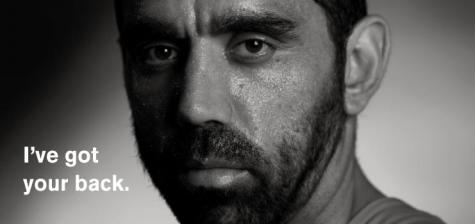White Ribbon Day began in remembrance of 14 women who were shot down by a lone gunman in Montreal, Canada in 1991 and has become a worldwide movement urging men to speak out available violence against women.
The date of 25th November was adopted as White Ribbon Day when it was declared by the United Nations to be the International Day for the Elimination of Violence Against Women in 1999. The date commemorates the lives of three nuns in the Dominican Republic who were killed for their political activism in 1960.
At the time the declaration was adopted, UN Secretary-General Kofi Annan stated that, “Violence against women is perhaps the most shameful human rights violation. And, it is perhaps the most pervasive. It knows no boundaries of geography, culture, or wealth. As long as it continues, we cannot claim to be making real progress towards equality, development and peace.”
According to Dr Michael Flood of LaTrobe University, anywhere from one-quarter to one-third, and even up to half, of Australian women will experience physical or sexual violence by a man at some point in their lives. A study conducted by the Australian Institute of Criminology found that 40% of all have women have experienced violence in some form since the age of 15.
Violence towards women can take many forms. There are the higher profile cases we hear about such as the recent incident in the bus in Melbourne, the pregnant woman who was stomped on when her handbag was stolen this week in Sydney, and in September, the alleged murder of Jill Meagher on her way home after a night out with friends. Some women are harassed in the workplace. Across many parts of the world, women and children are systemically caught up in the devastating consequences of war and poverty.
Women are most at risk of violence in their own home and from men they know, and perhaps love and trust. Young women are at a greater risk of violence than older women, and Aboriginal and Torres Strait Islander women experience higher rates of violence than other women.
Violence has a shocking impact on its victims and on the community. A study by Vic Health in 2004 found that amongst women under 45, intimate partner violence contributes more to their poor health, disability and death than any other risk factor, including obesity and smoking. KPMG estimated the cost to the community in 2009 to be $13.6 billion which, if there is no reduction in current rates, will cost the economy $15.6 billion by 2022.
So what does wearing a white ribbon do?
It’s a personal pledge that the wearer does not excuse violence against women, and is committed to supporting community action to stop violence by men against women.
Men who wear a white ribbon demonstrate their opposition to violence against women and their commitment to equality between men and women. Men are also encouraged to visit the My Oath campaign website and swear:
- Never to commit violence against women,
- Never to excuse violence against women, and
- Never to remain silent about violence against women.
White Ribbon Ambassadors are drawn from all sections of the community and include Kevin Rudd, Peter Garrett and Joe Hockey (politics), Adam Goodes (AFL) - pictured, Hazem El Masri and Tim Sheens (rugby league), Jason Culina (football), Daniel Geale (boxing), as well as Keith Urban, Wil Anderson, Kochie, Rove and Hamish and Andy.

















__small.png)










